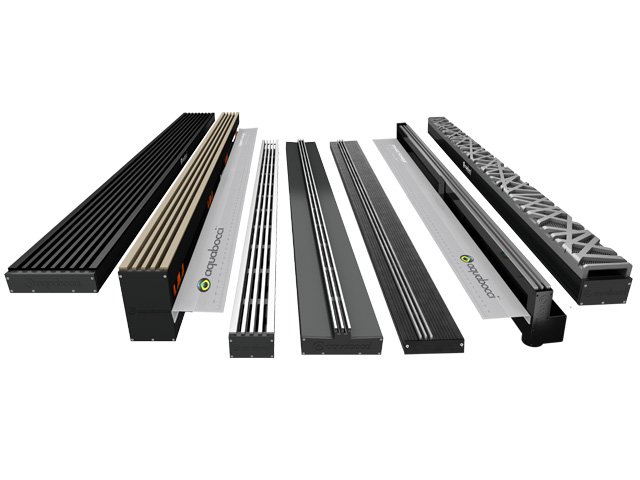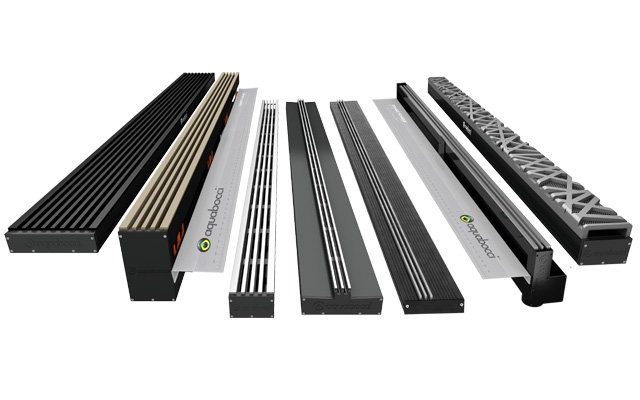
Honestly, you might never notice a threshold problem until it’s too late. Maybe you step onto wet carpet after a storm, or you spot a puddle right where your door meets the porch. That’s when you realize: good drainage isn’t just about pipes and gutters—it starts right at your entryway. And whether you’re working with a classic wood saddle, a modern composite threshold, or a popular brand like Pemko or National Guard, getting it adjusted for proper water runoff is key.
Here’s the thing: adjusting a threshold sounds technical, but it’s really just about managing those tiny slopes and seals so water goes outside, not inside. Let’s go step by step so you can feel confident—no fancy tools or contractor skills needed.
Why Threshold Adjustment Matters For Water Drainage
You might be wondering why you can’t just throw down a welcome mat and call it good. The answer? Water is sneaky. Even a small gap or dip at your door can let water pool and soak in. Thresholds are designed with slight slopes or built-in seals to channel water away, but those only work if everything sits at the right height and angle.
A misaligned or worn-down threshold can create just enough space for water to seep in, especially during heavy rain or if your porch slopes the wrong way. Over time, this doesn’t just mean puddles. You could end up dealing with wood rot, mold, or damaged flooring—all things that turn a quick fix into an expensive repair.
Think of your threshold as the door’s raincoat: it needs to fit just right to protect everything inside. Adjusting it might sound like a small job, but it has a huge impact on comfort, safety, and peace of mind.
Signs Your Threshold Needs Adjustment
Before you grab any tools, let’s talk about what to look for. Sometimes problems with water drainage aren’t obvious—unless you know the signs.
- Visible Gaps: If you can see daylight under the door or feel a draft, water can definitely get through.
- Puddles After Rain: Water that appears right at or inside the door threshold is a dead giveaway.
- Rust or Rot: Metal thresholds may show rust, while wood can look swollen or crumbly if water’s sneaking past.
- Mildew Smells: If things smell musty around your entryway, lingering moisture under the threshold is a likely culprit.
Don’t ignore these little clues. Catching them early can save you from bigger headaches down the line. Got a Pemko or National Guard threshold? The same rules apply, though some models have built-in adjusters that make tweaks a breeze.
Types of Thresholds and How They Affect Drainage
Not all thresholds are built the same, and your options can affect how you handle water drainage. Let me break it down:
- Wooden Saddle Thresholds: Classic and simple, but they can swell or warp over time, making them tricky if you get lots of rain.
- Aluminum or Composite Thresholds: Durable and resistant to rot, these often come with vinyl or rubber inserts for a better seal—especially helpful for keeping water out.
- Adjustable Thresholds: Brands like Pemko or National Guard offer models with screw-in caps that let you raise or lower the sealing surface. Super handy for fine-tuning fit over time.
The type you have matters, especially when it comes to adjustment. For example, if you’ve got an adjustable threshold, you might just need a screwdriver. With older, fixed wood thresholds, you may have to replace worn weatherstripping or even the entire piece if it’s badly damaged. Either way, knowing what you’re working with makes the job much easier—and keeps water where it belongs.
Step-By-Step: How To Adjust Your Threshold For Optimal Drainage
Let’s get hands-on. Adjusting a threshold isn’t rocket science, but it does take a little patience. Here’s how you do it:
- Step 1: Inspect
Check for visible gaps or signs of wear. Open and close the door—do you feel resistance or rubbing? If so, the threshold may be too high or uneven. - Step 2: Clean
Honestly, this step gets skipped way too often. Dirt, leaves, or built-up gunk can mess with the seal. Sweep and wipe down both the threshold and the bottom of your door. - Step 3: Adjust Height (if adjustable)
Most adjustable thresholds have a few screws on top. Use a screwdriver to turn them clockwise to raise the surface, or counterclockwise to lower it. Aim for a snug fit with the door sweep—no daylight, but not so tight you can’t close the door easily. - Step 4: Test With Water
Once adjusted, pour a little water outside the door and see if it runs away or slips in. Tweak again if needed. - Step 5: Replace Worn Parts
If weatherstripping or seals look torn, cracked, or missing, swap them out. Most hardware stores carry universal and brand-specific options—just measure before you buy.
If you ever feel like you’re chasing leaks around your threshold, don’t panic. Sometimes it takes a couple tries to get the fit just right, especially if your door frame or porch isn’t perfectly level.
Troubleshooting Common Threshold Drainage Problems
Here’s where things can get a little frustrating—even after adjusting, water still finds its way inside. Let’s talk through the usual suspects:
If water pools right up against the outside of the threshold, it might not actually be your door’s fault. Sometimes, the problem starts with a porch or step that’s sloped toward your house instead of away. No amount of threshold tweaking will fix a backward slope. In that case, consider adding a drip edge, a small awning, or even re-grading the area if you can.
When you notice the threshold is perfectly set, but water still seeps along the sides, check your door sweeps and jamb weatherstripping. Even a small slice of missing rubber can turn a good threshold into a useless one. And don’t forget: a loose or damaged door bottom can let water ride up and over, no matter how smart your threshold adjustment is.
If you have an older wood threshold that wobbles or has visible gaps, sometimes the best move is to reset or replace it entirely. Modern composite or Pemko-style models can offer better long-term drainage, especially in wet climates.
When To Reset, Replace, Or Upgrade Your Threshold
Sometimes, a simple adjustment isn’t enough. If you’ve tried raising and lowering the threshold, swapped out weatherstripping, and still see leaks, it’s probably time for a bigger fix.
Resetting a loose threshold is often a matter of removing screws, lifting the old piece, and adding a bead of waterproof caulk underneath before reinstalling. If the threshold is rotten or warped, don’t bother with halfway fixes—just replace it. Today’s composite and adjustable thresholds are miles ahead of old wood strips, especially in wet-prone entryways.
Here’s a quick comparison to help decide:
| Wood Threshold | Classic look, but needs more maintenance and can rot if exposed to water |
| Aluminum/Composite | More durable, lots of sealing options, and easier to adjust over time |
| Adjustable (Pemko/National Guard) | Best for tricky fits or old houses; lets you fine-tune at any season |
Upgrading might sound like more work up front, but it can be the difference between battling leaks every spring and actually enjoying your entryway all year.
The Role of Weatherstripping, Door Sweeps, and Seals
It’s easy to focus just on the threshold itself, but the supporting cast matters too. Most water issues start when you lose the complete seal between the threshold and the door or jamb.
Weatherstripping runs along the sides and top of your door frame, while a door sweep attaches to the bottom of the door itself. These work together with your threshold, kind of like a puzzle—if one piece is missing or damaged, water slips right through.
When you replace or adjust your threshold, always check these parts at the same time. If your sweep is torn or your frame weatherstripping has gaps, get replacements that match your door type—universal or brand-specific (like Pemko or National Guard, since you can often find parts for these at big box hardware stores).
Maintaining Optimal Water Drainage Over Time
Getting your threshold set is only half the battle. You’ll want to keep it working well year after year. That means making quick inspections a part of your regular home care routine, especially after storms or heavy rains.
Every few months—or any time you notice a draft or water spot—check for:
- Worn Seals: Replace any rubber or vinyl that’s cracked or missing.
- Dirt Buildup: Sweep and clean the threshold so gunk doesn’t block the water channel.
- Loose Screws or Fasteners: Tighten anything that’s wiggled free, especially on adjustable models.
- Slope Changes: If your porch settles or shifts, re-check the threshold slope and adjust if needed.
Keeping things tidy and in good repair might not feel glamorous, but it’s honestly the secret to a dry, comfortable home—no matter what nature throws your way.
Wrapping Things Up: A Threshold Set For Success
Getting your threshold dialed in for the best possible water drainage isn’t about fancy gadgets or endless repairs. It’s about paying attention, making small tweaks, and knowing when a bigger upgrade is worth it. The right adjustment keeps your home warm, dry, and welcoming—just by letting that little strip at your door do its job.
Whether you’ve got a brand-name adjustable threshold like Pemko or National Guard, or something simpler, the steps are the same: check, clean, adjust, and don’t ignore the weatherstripping. Tackle problems as soon as you spot them, and you’ll keep water where it belongs—outside your home, not soaking in. Here’s to dry carpets, happy feet, and one less home maintenance worry on your list.
